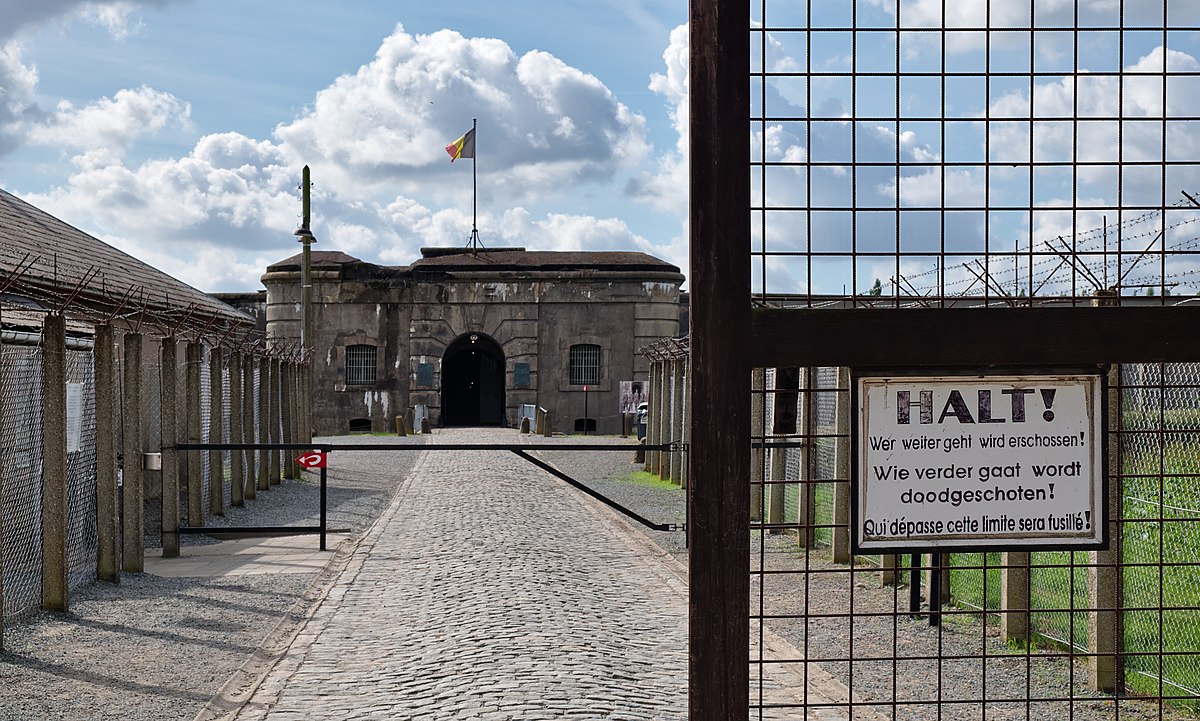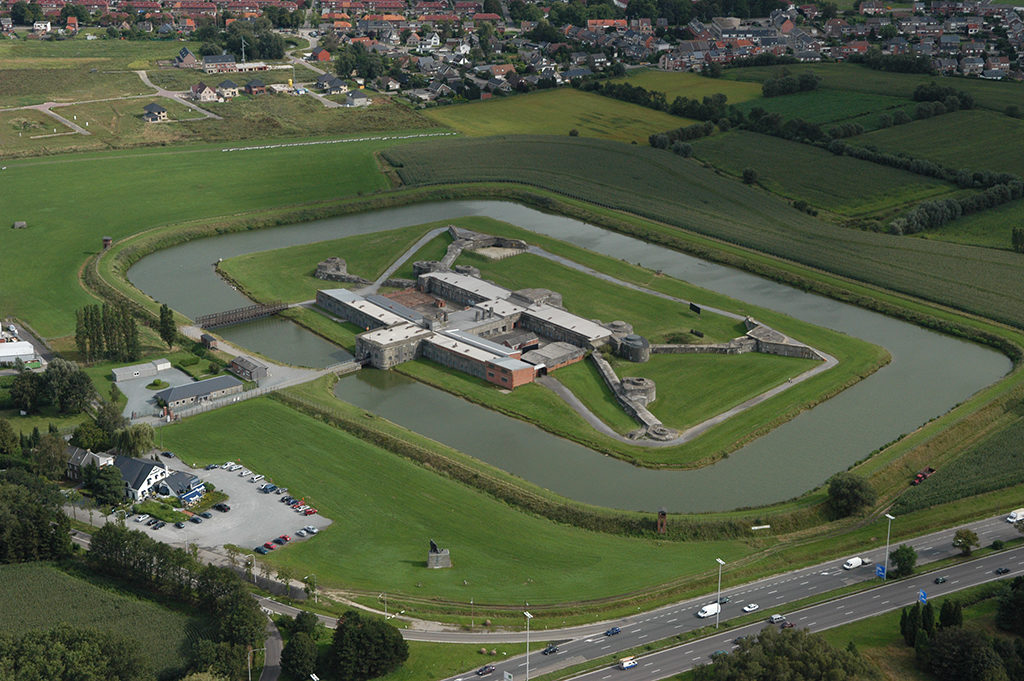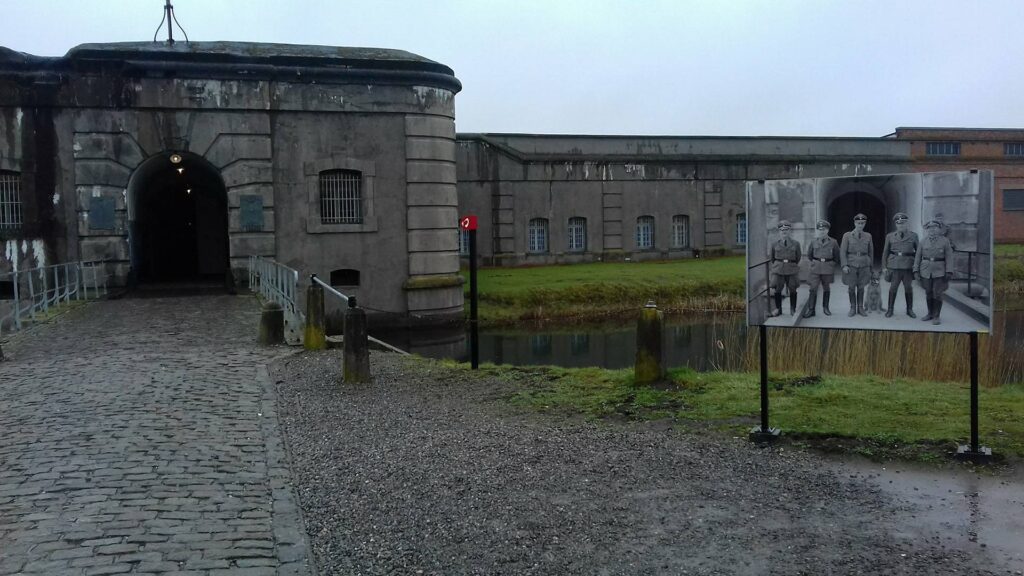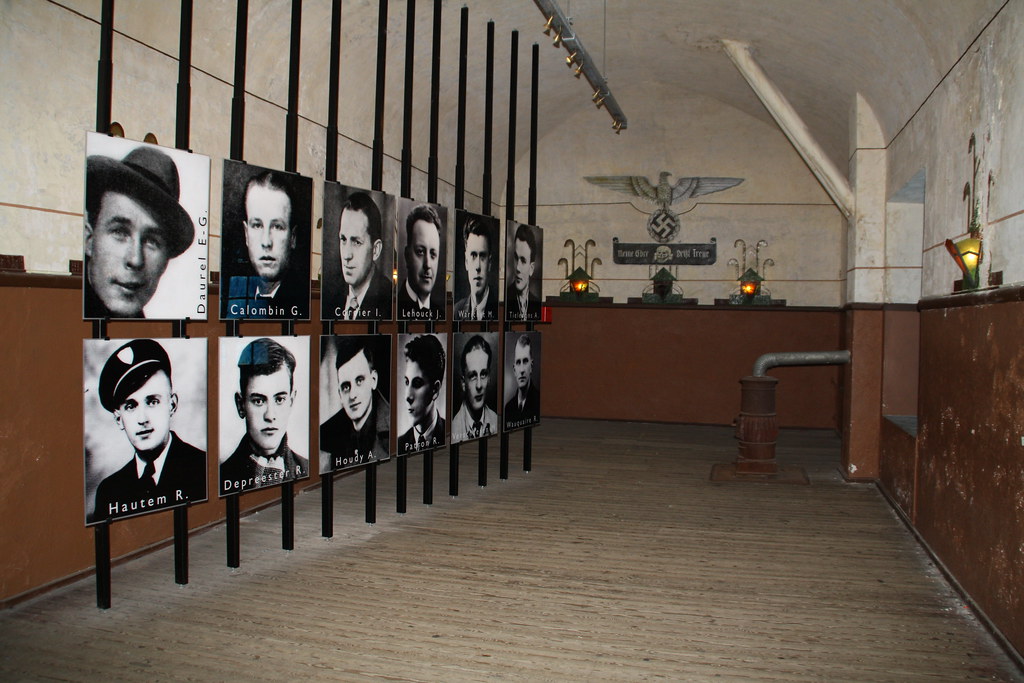Fort Breendonk is a former military installation at Breendonk, near Mechelen, in Belgium which served as a Nazi prison camp (Auffanglager) during the German occupation of Belgium during World War II.
Fort Breendonk was requisitioned by the Schutzstaffel (SS) shortly after the Belgian surrender on 28 May 1940 and used as a prison camp for the detention of political prisoners, resistance members, and Jews. Although technically a prison rather than a concentration camp, it became infamous for the poor living conditions in which the prisoners were housed and for the torture and executions which were carried out there. Most detainees were subsequently transferred to larger concentration camps in Eastern Europe. 3,590 prisoners are known to have been held at Fort Breendonk during the war of whom 303 died or were executed in the fort itself while 1,741 others subsequently died in other camps before the end of the war. In Belgian historical memory, Breendonk became symbolic of the barbarity of the German occupation.
The camp was evacuated ahead of the Liberation of Belgium by the Western Allies in September 1944. It was briefly repurposed to detain Belgian collaborators. It was declared a “national memorial” in 1947 and has subsequently been open to the public as a museum. Many of the camp’s personnel were subsequently tried for their wartime actions in Belgian courts.
Museum and memorial
In 1947 Fort Breendonk was declared to be a national memorial, recognizing the suffering and cruelty that had been inflicted on Belgian prisoners during World War II. The fort is now a well-preserved example of the prison camps operated by Nazi Germany and a national museum. The Fort is open to visitors all year round and is located close to the A12 Brussels-Antwerp motorway.
Pictures of working Nazi internment camps during the war are rare and, for a long time, it was believed that absolutely no pictures of Breendonk during the war existed. But in the early 1970s a batch of photos of the camp was discovered in the possessions of Dutch photographer Otto Spronk. He had collected thousands of pictures and films of the Third Reich as part of his work for the Centre for Historical Research and Documentation on War and Contemporary Society (Cegesoma). The collection consisted of 37 pictures depicting daily life in the camp. They were taken by German Nazi photographer Otto Kropf for propaganda purposes but were never used. All pictures are essentially cliche stills; none of the daily atrocities or horrors of the camp are shown. But they are the only reference material available. Several of the inmates on the pictures managed to survive the war and were able to identify the others on the pictures and the circumstances in which they were taken.





